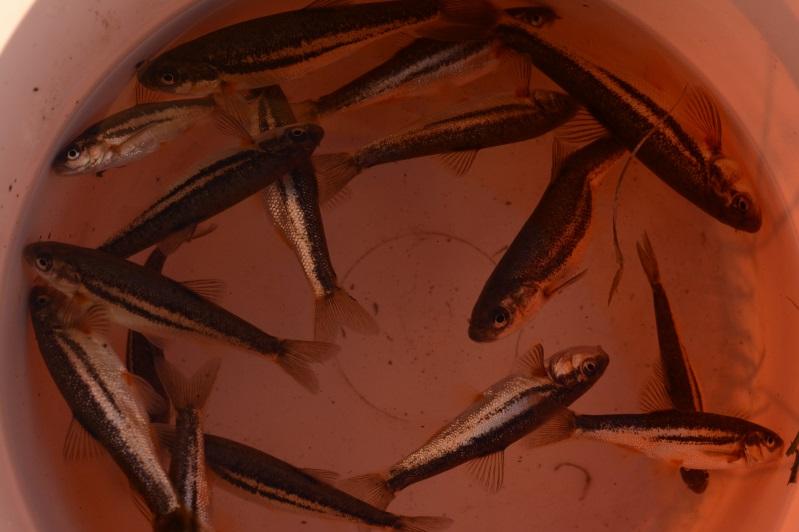Milica Lukač
Other projects
16 Nov 2015
Population Structure and Vulnerability of the Threatened Fish Species Telestes metohiensis from Karstic Streams in Bosnia and Herzegovina
Previous Rufford Small Grant helped us to establish the presence of striped pijor in certain localities (Dabar field) and provided better insight into its habitat. However, the presence of striped pijor is observed in other streams of karst fields in eastern Herzegovina, so we plan to expand the territory of the research. Recently described new species, Telestes dabar was recognized using morphological comparisons of isolated geographical populations of fishes identified earlier as Telestes metohiensis. A lectotype is designated for T. metohiensis, whose range is shown to include watercourses of Gatačko, Cerničko and Nevesinjsko fields in Eastern Herzegovina (Bogutskaya et al., 2012). In order to resolve taxonomic uncertainties resulted by overlap of morphological variation of these two species, it is necessary to implement molecular based taxonomy (DNA taxonomy). Consequently, clearly identification of species boundary would provide better insight into species range, which is further step for the implementation of the conservation management plan. DNA approach will contribute to establishing the species boundary in taxonomic sense and genetic variation of populations. We will also collect DNA material of invasive species in order to determine their evolutionary potential which is important due to competition with the endemic species for resources.

Captured individuals.
The main objectives of the project are summarized:
1. Define the taxonomic units, habitats and areas of striped pijor using data on species boundaries obtained by molecular markers. In order to complete distribution, we aim to expand study localities presumably inhabited by striped pijor.
2. Adjusting the parameter measurements of habitats: we plan to continue and optimize the activities that have been done so far, including physical and chemical parameters of watercourses (pH waters, temperature, oxygen - concentration and saturation and electrical conductivity).
3. Evaluate genetic and morphological variation of populations;
4. Sampling of invasive non-native fish species. We will use the same markers for quantifying genetic diversity in order to perform an evaluation of its evolutionary potential and competitiveness;
5. Raising public awareness of the unique karst springs and underground streams ecosystem by emphasizing of the endemic and vulnerable striped pijor. This information will help to enhance conservation efforts of the species through education and awareness campaigns.